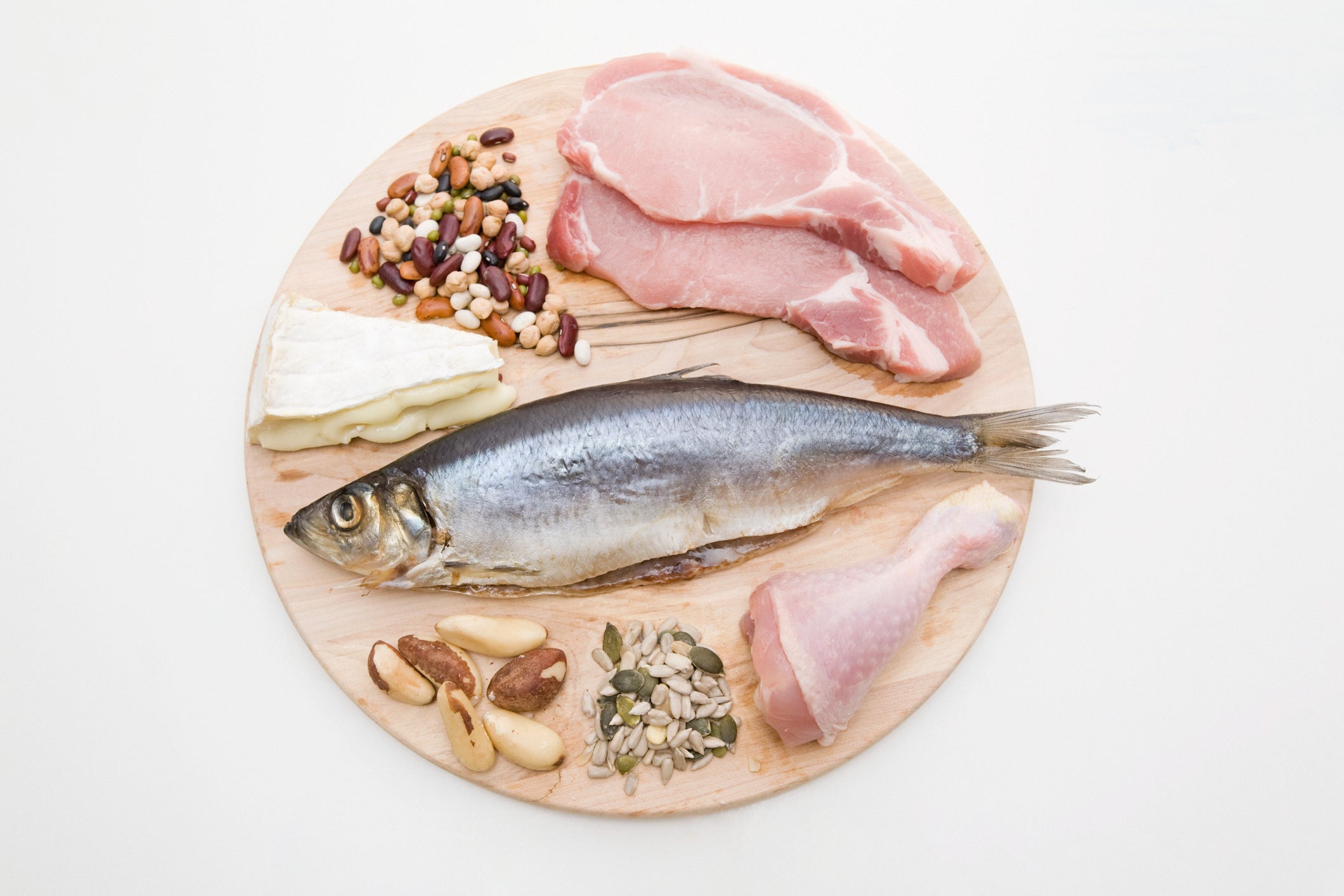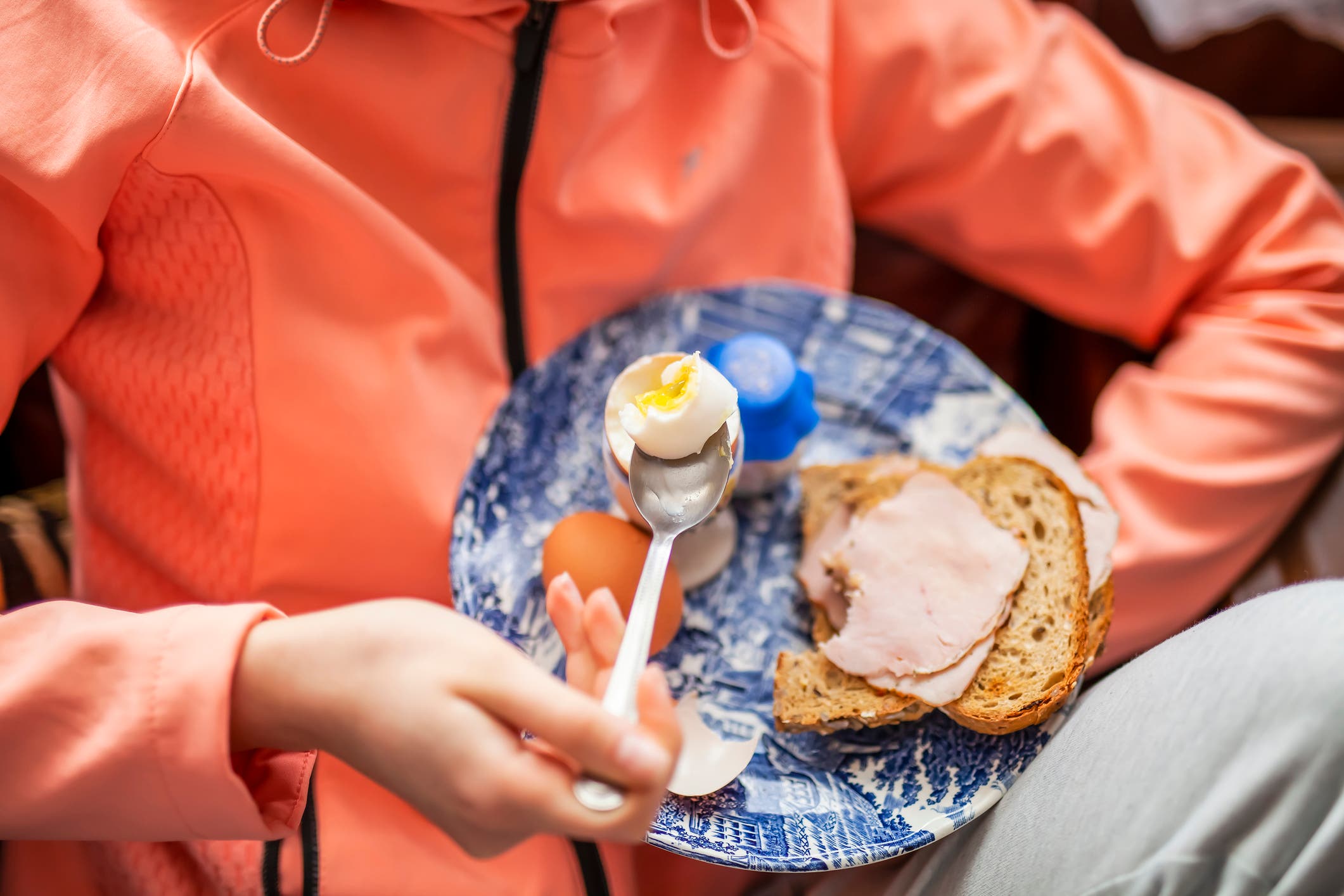6 Signs Your Protein Intake is Too Low

It keeps your energy up, builds muscle, and keeps you satiated, but it can be a nutrient many runners lack in their diet: protein.
In general, female athletes are more likely to miss the mark on their nutritional needs than male counterparts, says Yasi Ansari, national media spokesperson for the Academy of Nutrition and Dietetics, registered dietitian, nutritionist, and Certified Specialist in Sports Dietetics. That is especially true for runners who restrict their eating, putting themselves at risk for low protein intake.
“In the work that I do, it’s really important to encourage my athletes to be eating enough to ensure they are meeting their nutrition needs from all their macronutrients,” she says.
RELATED: What Athletes Should Know About Impossible Burger, Quorn, and Other Plant-Based Meats
Eating the right amount of protein plays a significant role in a runner’s diet. It helps repair muscles after a rigorous workout. It also builds and maintains muscle mass, which boosts performance. And it helps to support the immune system. “Protein plays many other roles as well,” says Ansari. It aids in cell turnover, she says and makes up enzymes and some hormones while playing a role in a variety of physiological functions.
Because hemoglobin is an oxygen-carrying protein, having a deficit puts you at risk of fatigue, “which can lead to poor performance and low energy during training,” she says.
Of course the amount of protein you need varies depending on the intensity of your run workouts. Many female athletes are able to consume the recommended protein requirements from their daily diet as long as protein intake is 10 to 15 percent of their nutrition plan, according to the Journal of Sport and Exercise.
If you’re unsure on whether you’re getting enough protein, there are signs that you can pay attention to.
Signs You’re Not Eating Enough Protein
Dave Scott, six-time IRONMAN champion, works with many athletes to make sure they consume the right balance of nutrients to avoid any issues during a competition. He outlines six warning signs that it might be time to up your protein intake:
- Restless sleep
- Lack of clear cognitive thought process
- Loss of muscle tissue or changes in body composition
- Brittle nails and hair
- Feeling lazy, sluggish, or generally fatigued
- Low libido
RELATED: I Ate Skratch Labs New Crispy Rice Cakes on My Long Runs, Here’s How it Went
What are the Protein Needs of Women Runners?
Scott suggests women should use the following protein guideline to ensure they consume the right amount:
- Light exercise (30 to 60 minutes a day) take in 1.0 to 1.2 grams of protein per kilogram of body weight
- Moderate exercise (1 to 2 hours a day) take in 1.3 to 1.5 grams of protein per kilogram of body weight
- Heavy exercise (more than 2 hours) take in 1.6 to 2.0 grams of protein per kilogram of body weight
Ansari recommends checking with a registered dietitian to dial in on your precise protein needs. But as a general rule, you may need more protein if you’re at risk of energy deficiency, you’ve increased your training, the intensity of your training has gone up, you’re pregnant, recovering from injury, or an older adult.
Everyone should be including protein in every meal. “Several studies agree that evenly distributing protein at about 25-35 grams of protein per meal, throughout the day will also help optimize muscle protein synthesis compared with an uneven distribution of protein,” says Ansari.
Some tips to do so: Sprinkle protein powder in your oatmeal, smoothie, coffee, or yogurt parfait in the morning. Eat beans or meats at lunch or dinner, and snack on high-protein foods in between meals (like cheese and nuts or peanut butter and crackers).
In a traditional diet Scott recommends eating cold water fish, grass-fed beef, and chicken three to five times a week. For vegetarian or plant-based diets he recommends Nori seaweed or Tempeh instead. (Note: While vegan and vegetarian athletes may be at higher risk for low protein intake, Ansari is a firm believer that it is possible to have a solid nutritional game plan: “If you are following a vegan or vegetarian eating pattern you can meet your protein needs with an appropriately planned vegan or vegetarian eating pattern.”)

RELATED: Bone Health Basics For Runners, Build Them, Keep Them, Protect Them
“Consistency is key,” says Ansari. “See which protein sources work best for you and how/when you can add more protein to your plates.”
Some other great protein sources include:
- Dairy products (yogurt, milk, cheese, cottage cheese)
- Poultry
- Salmon, tuna
- Lean cuts of beef
- Beans, lentils, chickpeas, soy milk, edamame, tofu
- Nuts and seeds (walnuts, almonds, cashews, peanuts, pumpkin seeds)
- Quinoa and certain breads
- Protein shakes, powders, and bars
Ansari adds the encouragement that you likely already know if you’re getting enough protein in your diet based on how you feel. “If you’re an athlete who is meeting their needs through consistent and adequate nutrition, you are likely meeting your protein goals,” she says.